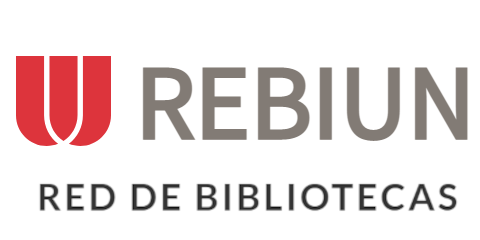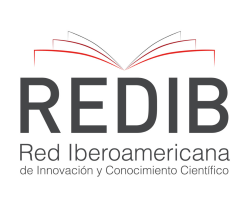Dubbing as a strategy to overcome language anxiety and improve oral communication
Resumen
La ansiedad lingüística (AL) es un factor que afecta negativamente el aprendizaje de idiomas extranjeros. El objetivo del presente estudio es investigar el impacto del doblaje de videos como estrategia para reducir la AL y mejorar la competencia oral en estudiantes de inglés técnico. Se utilizó la escala de ansiedad lingüística (FLCAS) DE Hortwitz para medir los niveles de AL antes y después de una intervención de doblaje de videos de 8 semanas entre 48 estudiantes. Para este estudio se utilizaron métodos cuantitativos y cualitativos. Para analizar los datos cuantitativos se utilizó el software JAMOVI 2.3.28.0. y MAXQDA24 para el análisis cualitativo. Estadísticamente se analizó el registro de notas para comparar los resultados de la aplicación del doblaje de videos. Los resultados muestran que el doblaje de video podría ser una estrategia efectiva para disminuir la AL y mejorar la confianza y competencia oral de los estudiantes en el uso del idioma extranjero.
Descargas
Citas
Arbain, A. (2023). Dubbing as a Pedagogical Tool. EDUCASIA Jurnal Pendidikan Pengajaran dan Pembelajaran, 8(2), 147-156. https://www.researchgate.net/publication/372222322_Dubbing_as_a_Pedagogical_Tool_An_Experimental_Study_on_Eleventh-Grade_Students_at_SMAN_8_Samarinda
Arnáiz, P., & Guillén, F. (2012). Foreign language anxiety in a Spanish university setting: Interpersonal differences. Revista de Psicodidáctica, 1(1), 5-26. https://www.redalyc.org/pdf/175/17523162003.pdf
Beltramello, A. (2016). Audiovisual translation and language learning: an integrated approach. [Paper presentation]. Constantine the Philosopher University in Nitra, Slovakia. https://www.researchgate.net/publication/311509396_Audiovisual_translation_and_language_learning_an_integrated_approach/citation/download
Burston, J. (2005). Video dubbing projects in the foreign language curriculum. CALICO Journal, 23, 79-92. https://doi.org/10.1558/cj.v23i1.79-92
Dewaele, J. M. (2021). Thirty Years of Research into Second Language Classroom Anxiety: Insights, Gaps, and Future Directions. Language Teaching, 54(3), 381-415.
Findlay, Y. (2017). A review of Efron, S. E. & Ravid, R. (2013) Action research in education: a practical guide. Leading and Managing, 23(2), 96-98. https://search.informit.org/doi/10.3316/INFORMIT.349640463695585
Fuentealba Jiménez, T., & Quintanilla Espinoza, A. (2025). Video dubbing as a strategy for reducing foreign language speaking anxiety levels. Revista Innovaciones Educativas, 27(42), 29-41. https://dx.doi.org/10.22458/ie.v27i42.5301
Guanuche, R. P. (2024). The impact of anxiety on b1 level college students' oral competence in the English language. https://doi.org/10.37811/cl_rcm.v8i4.12874
Hernández, S. R. (2006). Metodología de la investigación (4.ª ed.). McGraw-Hill Interamericana.
Horwitz, E. K. (1986). Preliminary evidence for the reliability and validity of a foreign language anxiety scale. TESOL Quarterly, 20(3), 559–562. https://doi.org/10.2307/3586302
Huang, D. (2022). Investigating the influence of video-dubbing tasks on EFL learning. Language Learning & Technology, 26(1), 1-20. https://www.researchgate.net/publication/382181174_Investigating_the_influence_of_video-dubbing_tasks_on_EFL_learning
Mercer, N., Mannion, J., & Warwick, P. (2019). Oracy education: The development of young people’s spoken language skills. In N. Mercer, R. Wegerif & L. Major (Eds.), The Routledge international handbook of research on Dialogic Education (pp. 292–305). Routledge.
Nicolae, C. (2018). On Audiovisual Translation: Dubbing. Romanian Journal of English Studies, 15(1), 51-58. https://www.researchgate.net/publication/330569814_On_Audiovisual_Translation_Dubbing
Price, M. L. (1991). The subjective experience of foreign language anxiety: Interviews with highly anxious students. In E. K. Horwitz & D. J. Young (Eds.), Language anxiety (pp. 101-108). Prentice Hall.
Sánchez, M. (2021). Netflix likes it dubbed: Taking on the challenge of dubbing into English. https://www.researchgate.net/publication/353599409_Netflix_likes_it_dubbed_Taking_on_the_challenge_of_dubbing_into_English
Sánchez-Requena, A. (2018). Intralingual dubbing as a tool for developing speaking skills. Translation and Translanguaging in Multilingual Contexts, 4(1), 101-128.
Talaván, N., & Costal, P. (2017). The Potential of Intralingual Dubbing in Foreign Language Learning: How to Assess the Task. https://www.researchgate.net/publication/321726725_iDub_-_The_Potential_of_Intralingual_Dubbing_in_Foreign_Language_Learning_How_to_Assess_the_Task
Derechos de autor 2025 Ruben Patricio Guanuche Díaz , Livington Javier Rojas González , Julio Amador Merchan Buri , Gonzalo Emilio Añazco Zhigui , Glenda Maria Loayza Zambrano

Esta obra está bajo licencia internacional Creative Commons Reconocimiento 4.0.













.png)




















.png)
1.png)


